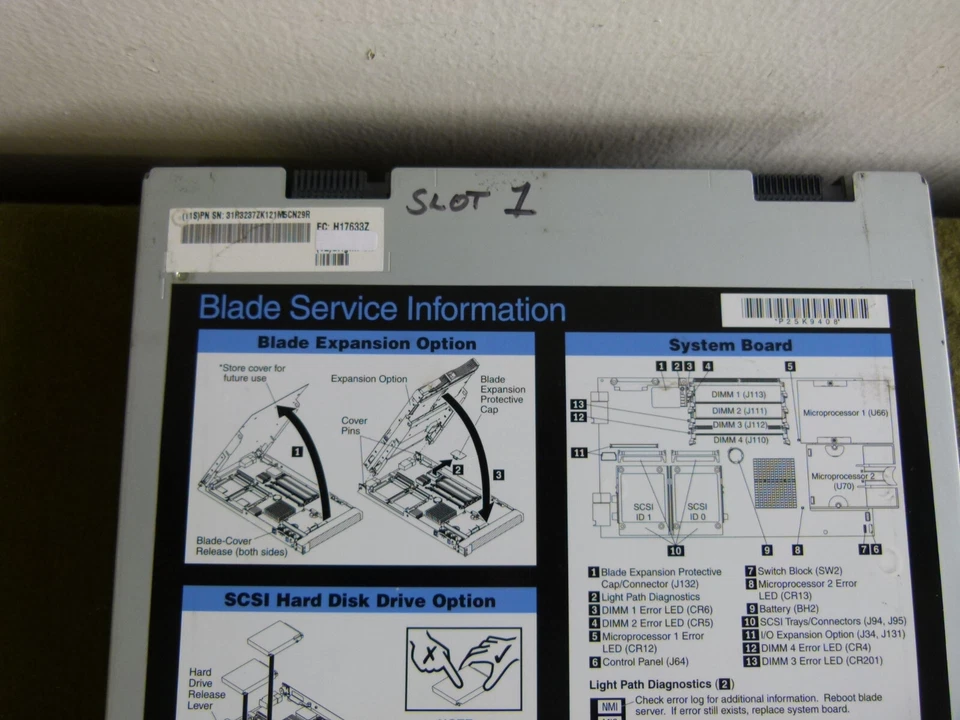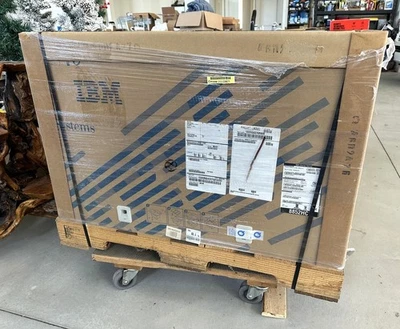IBM BladeCenter Computer Servers
Shop by category
100 results
Sort: Best Match
- Pre-Owned · IBMRM 208.12or Best OfferRM 737.39 shipping
- Pre-Owned · IBMRM 208.16or Best OfferRM 432.27 shipping
- RM 915.90or Best OfferRM 445.00 shipping
- Pre-Owned · IBMRM 499.58or Best OfferRM 464.03 shipping
- RM 18,526.24Free international shipping
- RM 136.81or Best OfferRM 268.15 shipping
- Brand New · IBMRM 49,958.40or Best OfferRM 7,743.55 shipping
- Pre-Owned · IBMRM 16,648.64or Best OfferRM 374.48 shipping
- RM 5,412.16or Best OfferRM 416.32 shipping
- RM 15,903.42Free international shipping
- RM 332.85or Best Offer
- RM 4,104.39or Best OfferRM 328.35 shipping
- RM 394.02RM 191.54 shipping
- RM 5,992.42or Best OfferRM 492.53 shipping
- RM 4,897.91or Best OfferRM 492.53 shipping
- Pre-Owned · IBMRM 416.32or Best OfferRM 4,171.73 shipping
- RM 1,339.22RM 739.04 shippingOnly 1 left!
- RM 5,226.26or Best OfferRM 492.53 shipping
- Pre-Owned · IBMRM 166.53or Best OfferRM 459.99 shipping
- RM 246.26RM 355.71 shipping
- RM 6,266.04or Best OfferRM 492.53 shipping
- RM 332.85or Best Offer
- RM 7,634.17or Best OfferRM 492.53 shipping
- RM 416.11or Best OfferRM 668.53 shipping
- RM 1,457.12or Best OfferRM 416.32 shipping
- Pre-Owned · IBMRM 11,901.23or Best OfferRM 297.46 shipping
- New (Other) · IBMRM 557.49or Best OfferRM 168.44 shipping
- RM 416.28RM 610.99 shipping
- Pre-Owned · IBMRM 915.90or Best OfferRM 1,163.78 shipping
- RM 2,410.49or Best OfferRM 1,076.73 shipping
- RM 9,823.18or Best OfferRM 492.53 shipping
- Pre-Owned · IBMRM 1,253.12or Best OfferRM 1,174.73 shipping
- New (Other) · IBMRM 672.59or Best OfferRM 203.23 shipping
- RM 249.58or Best Offer
- New (Other) · IBMRM 664.95or Best OfferRM 200.92 shipping
- RM 4,159.04or Best OfferRM 782.60 shipping
- RM 208.12or Best Offer
- RM 1,998.29or Best OfferRM 806.00 shipping
- Pre-Owned · IBMRM 416.32or Best OfferRM 7,034.60 shipping
- Pre-Owned · IBMRM 3,305.58or Best OfferRM 1,241.42 shipping
- RM 603.62RM 404.12 shipping
- Pre-Owned · IBMRM 749.33RM 408.87 shipping
- Pre-Owned · IBMRM 1,248.96RM 4,171.73 shipping
- RM 2,167.17or Best OfferRM 1,110.69 shipping
- RM 208.12RM 303.91 shipping
- New (Other) · IBMRM 669.22or Best OfferRM 202.22 shipping
- RM 394.02RM 355.71 shipping
- Pre-Owned · IBMRM 999.13
- RM 1,340.95or Best OfferRM 419.89 shippingOnly 1 left!
- RM 249.75RM 215.20 shipping
- RM 6,637.01or Best OfferRM 5,174.18 shipping
- RM 395.46or Best OfferRM 397.38 shipping
- New (Other) · IBMRM 3,746.84Was: RM 4,163.16was - RM 4,163.16RM 718.78 shipping
- RM 162.36RM 731.77 shipping
- RM 2,031.72or Best OfferRM 1,110.69 shipping
- RM 582.81RM 403.46 shipping
- Pre-Owned · IBMRM 416.32RM 4,171.73 shipping
- New (Other) · IBMRM 449.58Was: RM 499.54was - RM 499.54RM 689.01 shipping
- RM 525.36RM 355.71 shipping
- RM 525.36RM 355.71 shipping




























































